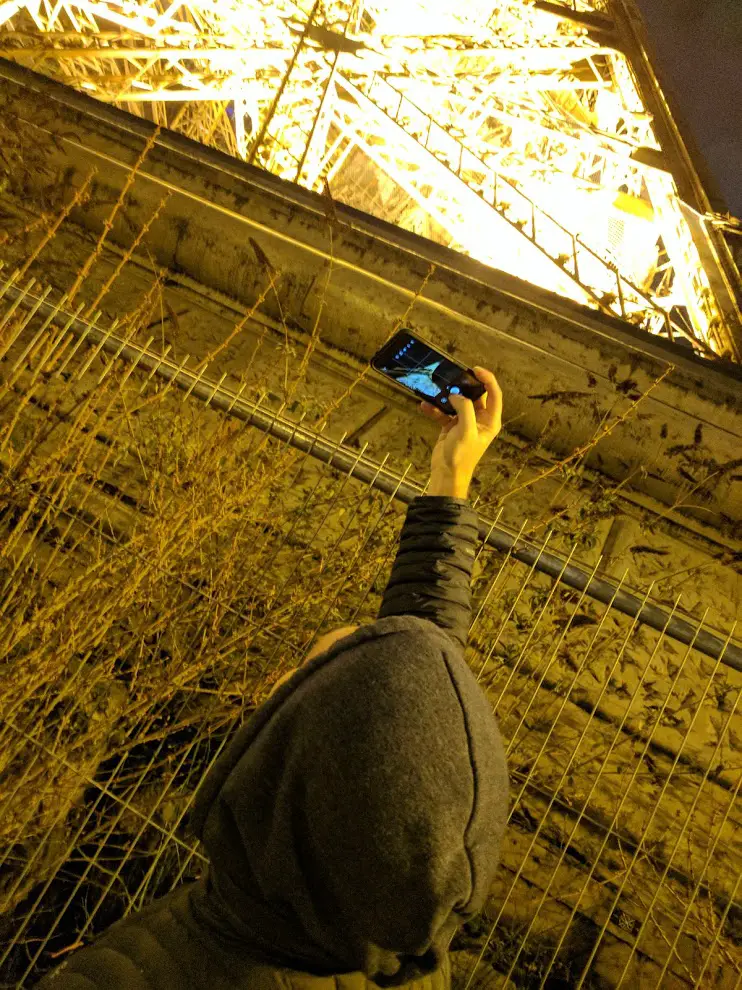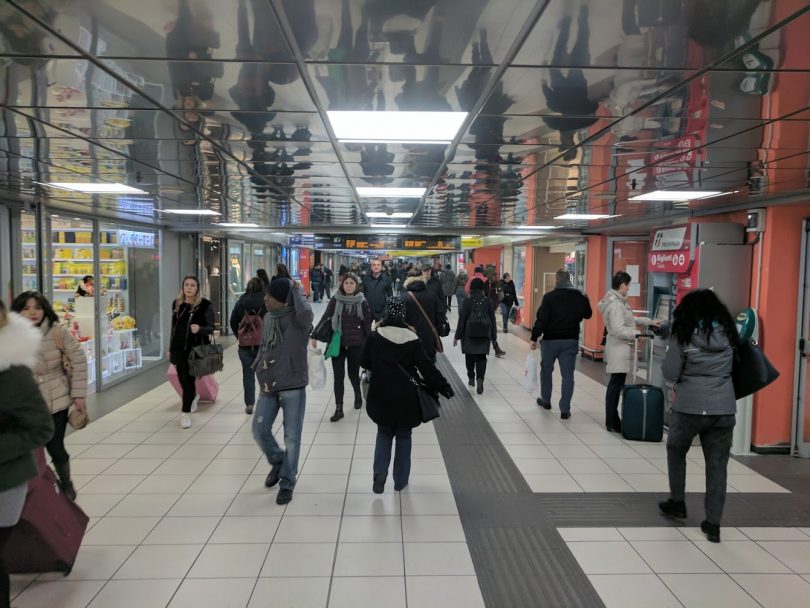updated on September 17th, 2017
If you’re like most of us, you use your smart phone daily to take photos, catch up on email, navigate maps, and a plethora of other stuff that makes life easier.

Getting a quick pic of the Eiffel Tower? You’ll want your phone.
Sure, when you travel you could take a break from being constantly connected. We found that we didn’t use our phones as much, but they still came in handy during recent travels. We tried a few different options and were able to keep in touch while traveling through Europe.
Check with your carrier.

Check with your carrier for their international rates
We use Verizon and had the option to use their International Travel Plan. It costs $10 a day to use your normal minutes, texts, and data. One perk to this was that if you don’t use your phone, you don’t get charged. You only pay the $10 daily fee when you first use the phone. However, if you’re traveling for a few weeks and use your phone daily, this will add up. Service seemed very reliable for the few days we used it. Other carriers may offer a similar plan, and it’s worth checking out before you leave.
Buy a SIM card.
SIM cards are easily available in many European countries. There were places to buy them at airports, train stations, and busy streets.

The currency exchange store in train stations usually sells SIM cards as well.
If you’re in France, a company called Orange offers SIM cards on their Holiday Plan for about 40 Euros. It had 2gb of data, 120 calling minutes, and 1000 texts. We found that we were able to call to the US but weren’t able to text US numbers. It worked well for us for the short time that we were using it.

Look for this logo in France
When we ran out of the 2gb of data on the Orange SIM, we were in Italy and tried to “top up” our account. This proved difficult because the website wouldn’t accept anything but French credit cards, and we couldn’t purchase the top ups in any stores in Italy. We may have been doing something wrong, but we don’t speak French very well and the customer service phone number was only available for French speakers.
This brings us to the second SIM card option we tried, through Vodafone. We purchased this in the Milan train station for 20€ and it came with 4gb of data and 500 minutes, no texting included. We hadn’t been using texting anyway (there’s plenty of messaging apps that use data!) so this was a great deal. We have to say, we were much more impressed with Vodafone. Had we needed to top up our account, we could have used their website and paid with Paypal. However, 4gb was plenty for us!

Vodafone can be found in several countries across the globe
Both of the SIM cards we tried are reusable, and can be renewed before another trip to Europe.
In the end, we both agree that purchasing a SIM card was much easier and less expensive.
We tended to use WiFi when available in hotels and public places, but having the ability to use Google Maps and social media on the go was really helpful! Just make sure that you stash your phone’s original SIM card somewhere safe for the remainder of your trip, so you can swap them out when you get back home!

